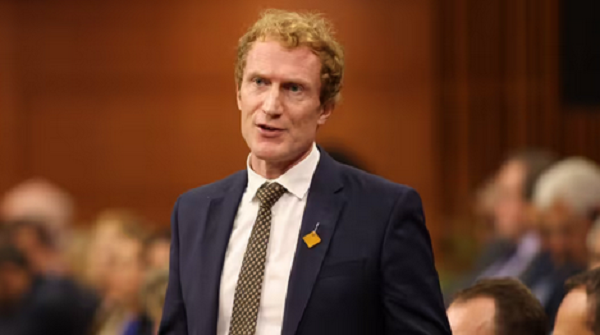Alberta population surge as the province slow to react to newcomers
Alberta’s population has ballooned over the past four years with hundreds of thousands of newcomers, making it the fastest-growing province in Canada, in large part because of non-permanent residents.
And while Alberta Premier Danielle Smith points at lax federal immigration rules as the reason growth has been unsustainable, real policy decisions are being made based on the fast-rising numbers.
Housing affordability and a lower cost of living have been the main drivers for people globally and from within the country to flock to the Prairie province, in addition to job opportunities, respected colleges and universities and picturesque natural landscapes. As early as 2025, the population could surpass five million people.
But Alberta, like other provinces, has been slow to deal with the pressures of unprecedented growth: The health care system is in crisis. There aren’t enough schools and affordable housing is growing scarce. Ms. Smith has said it is a “severe challenge” to keep up.
Alberta’s population is forecast to grow by 4.6 per cent in 2024, up from the provincial government’s original estimate of 3.7 per cent, and higher than the 4.1 per-cent-increase seen last year.
Ms. Smith, earlier this week, blamed the federal Liberals’ “unrestrained” immigration policies for undue pressures on Alberta’s social services. She then announced more than $8.6-billion in capital spending to build new schools, both public and private, over seven years to address overcrowding.
Immigration is a political flashpoint for the Premier who faces a leadership review in November. Ms. Smith has previously said she wants to double the population of Alberta by 2050 to drive the economy and, in March, asked Ottawa to increase the province’s immigration allotment.
She appeared to change her tune this month by stating that “asylum claimants” are no longer welcome in Alberta, adding that the province is supporting a disproportionate share of Ukrainians who fled to Canada to escape the war with Russia. “We simply cannot afford it,” said Ms. Smith.
Moshe Lander, a senior lecturer in economics at Concordia University, said it is unreasonable to hold the federal government solely responsible for Alberta’s shortfalls, especially considering the Premier’s push to attract people to the province. For example, through the Alberta Is Calling campaign to attract workers from Ontario and Atlantic Canada.
“The federal government does not run provincial health care systems. They don’t run hospitals. They don’t run schools, yet they get blamed for it. But it’s not their responsibility,” Mr. Lander said.
Data from Statistics Canada show Alberta’s population grew by roughly 444,500 to 4.85 million people over the past four years, up to the latest data ending April 1. Interprovincial migration, primarily from Ontario and British Columbia, has accounted for a chunk of the growth, but international arrivals were the biggest driver.
A net gain of 32,000 international migrants arrived in Alberta during the first quarter of this year alone. About two-thirds were non-permanent residents who have work or study permits, or who have claimed refugee status. Nearly 100,000 non-permanent residents have come to Alberta since January, 2023.
Alicia Planincic, director of policy and economics with the Business Council of Alberta, said the current population surge is unlike anything seen before in the province, not just because of its sheer magnitude but the demographics of newcomers.
“Before, when we talked about big population booms, typically it was driven by a strong economy and the people we were attracting were young, single people, ready to work,” she said. “It is sort of across the board now. It’s people of all ages, it’s more older people, it’s also more children. … It’s basically everybody.”
Interprovincial migrants aged 20 to 29 accounted for 28 per cent of arrivals to Alberta in 2023, a drop of about 15 per cent compared with the last major boom between 2011 and 2013, according to data compiled by the Business Council of Alberta. Older adults, 60 and over, comprised about 14 per cent of migration, up from just one per cent a decade earlier.
Meanwhile, international non-permanent residents have shown a younger demographic shift with more children than in the past, according to the council. Newborns to those aged 19 accounted for 24 per cent of growth compared to roughly 15 per cent during the last boom, which Ms. Planincic says could be linked to the influx of Ukrainian families to Alberta.
Calgary and Edmonton continue to be the most popular places for newcomers to settle. But there is also growth in other communities, including Red Deer, Lethbridge and Canmore.
The Alberta government forecasts population growth to moderate to 3.2 per cent next year.
This article was first reported by The Globe and Mail













